Dampers, Louvers, & Diverters
In HRSG systems, many different types of dampers and louvers are employed. The type and construction used is dependent on the purpose it is used for. Dampers and louvers can generally be broken down by the following types.
Butterfly Damper:
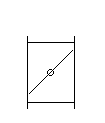 |
Butterfly dampers are single blade, low leakage or minimum leakage dampers utilizing a round, square or rectangular blade. Butterfly dampers are well suited for on/off service or flow control balancing. Electric, pneumatic, hydraulic and manual gear actuators with pneumatic or electrical positioners can be used. |
Parallel Blade Louver:
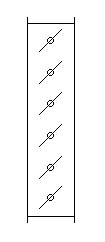 |
The parallel design is used primarily for isolation. The use of blade edge and jamb seals achieves minimal leakage past the closed damper. These dampers are used mostly in air preheat and heat recovery systems. They would be used where a tight shut off is required, such as isolating one unit from another in a multiple unit system. Electric, pneumatic, hydraulic and manual gear actuators with pneumatic or electrical positioners can be used. |
Opposed Blade Louver:
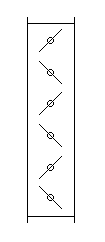 |
The opposed design exhibits the best flow control characteristics with moderate leakage past the closed damper. This type damper would be necessary if the accuracy of the flow amount is required or if the flow pattern must be maintained, such as when entering a burner zone. Electric, pneumatic, hydraulic and manual gear actuators with pneumatic or electrical positioners can be used. |
Double Louvers:
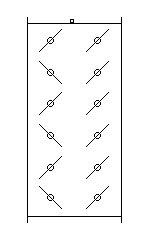 |
The double louver design utilizes two banks of blades. Zero flue gas leakage is achieved by pressuring the area between two closed banks of blades with seal air. The parallel/opposed configuration provides zero leakage yet retains good flow control characteristics. These dampers can be found in applications where fast bypass capability is required during an upset condition. Double louvers can also be found where overhead space is not available to install a slide gate damper. |
Slide Gate(Guillotine):
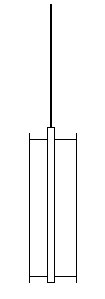 |
Slide gate isolation dampers are available in low leakage and zero leakage designs utilizing either machine screws or chain drives. Slide gate dampers can be furnished with electrical actuators, air actuators or hydraulic actuators. |
Flow Diverter Dampers:
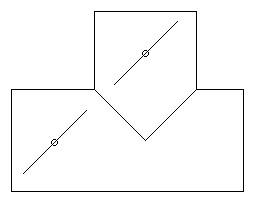 |
Flow diverter dampers are utilized on many process and heat recovery systems to direct the flow in one or two directions. In a heat recovery system, the diverter damper would normally direct the gas to a waste heat recovery system or in a bypass mode through a silencer and stack. The diverter damper can also be furnished with a single end pivoted blade to direct the gas flow into one of the two outlets. The metallurgy of the damper is based on the design temperature and pressure of the system. |
Disclaimer:
The formulas and correlations presented herein are all in the public domain and are to be used only as a learning tool. Note that any product, process, or technology in this document may be the subject of other intellectual property rights reserved by sponsors or contributors to this site. This publication is provided as is, without any warranty of any kind, either expressed or implied, including, but not limited to, the implied warranties of fitness for a particular purpose, or non-infringement.
The formulas, correlations, and methods presented herein should not be considered as being recommended by or used by the sponsors of this site. The purpose of this site is educational and the methods may or may not be suitable for actual design of equipment. Only a fired heater design engineer is qualified to decide if a calculation or procedure is correct for an application.